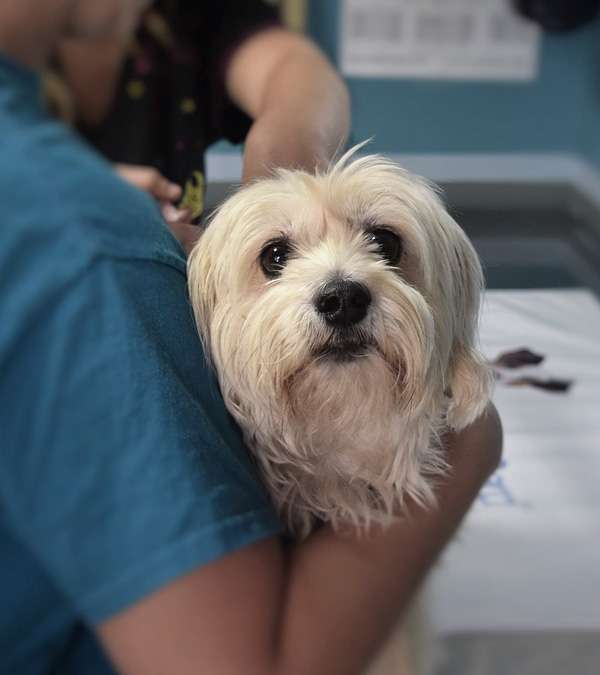ONCOLOGY
ONCOLOGY
Oncology
Cancer (neoplasia) is reported to be a leading cause of death in dogs and cats. Though cancer can be challenging to treat, early detection can improve the prognosis. With recent advances in the detection and treatment of cancer, clients and their pets have more treatment options and hope than ever before. At Bit & Spur Animal Hospital, we are committed to making clients part of the treatment team offering them the broadest range of effective treatments for their pets. At Bit & Spur Animal Hospital, our clients find the optimal combination of technology and compassion that they would expect for themselves and other family members if they were diagnosed with a life-threatening illness.
10 Common Signs of Neoplasia in Small Animals
1. Abnormal swellings that persist or continue to grow; NOTE: while cancer is often an asymmetrical disease, lymphoma is a cancer that often occurs on both sides of the body. Therefore, even symmetrical swellings should not be ignored.
2. Sores that do not heal
3. Weight loss
4. Loss of appetite, or increased/decreased water intake
5. Bleeding or discharge from any body opening
6. Offensive odor
7. Difficulty eating or swallowing
8. Hesitation to exercise or loss of stamina
9. Persistent lameness or stiffness
10. Abnormal urination (including increased urine volumes), breathing, defecation
Many of the above signs are also seen with non-cancerous medical conditions. Observation of any of these symptoms warrants prompt examination to determine the cause.


10 Common Signs of Neoplasia in Small Animals
1. Abnormal swellings that persist or continue to grow; NOTE: while cancer is often an asymmetrical disease, lymphoma is a cancer that often occurs on both sides of the body. Therefore, even symmetrical swellings should not be ignored.
2. Sores that do not heal
3. Weight loss
4. Loss of appetite, or increased/decreased water intake
5. Bleeding or discharge from any body opening
6. Offensive odor
7. Difficulty eating or swallowing
8. Hesitation to exercise or loss of stamina
9. Persistent lameness or stiffness
10. Abnormal urination (including increased urine volumes), breathing, defecation
Many of the above signs are also seen with non-cancerous medical conditions. Observation of any of these symptoms warrants prompt examination to determine the cause.
Common Types of Neoplasia in Small Animals
1. Skin – Skin tumors are very common in older dogs, but much less common in cats. While skin tumors in cats are frequently malignant, in dogs they are often benign. Fine needle aspiration cytology is a simple, non-invasive technique that may be used to differentiate between benign versus malignant skin tumors. Relying on physical examination of skin tumors alone is an imprecise method and unfortunately can allow malignant masses to go undetected. We may recommend a needle aspirate for your pet which is the insertion of a needle into the tumor. Suction is applied to the syringe to aspirate cellular material into the needle. This material is then forced onto a glass slide and spread into a thin film. This slide is then stained to identify cells within the sample. Cytologic evaluation (slide-reading) is performed in house. We may also send the slide to an outside diagnostic lab for a clinical pathologist to further examine. Please see the services page In House Laboratory available on our website for further information about cytology.
2. Mammary Gland (Breast) – 50% of all breast tumors in dogs and greater than 85% of all breast tumors in cats are malignant. Spaying your female pet before her first heat cycle will greatly reduce the risk of mammary gland cancer.
3. Head & Neck – Neoplasia of the mouth and nose; signs to watch for are a mass or tumor in the oral cavity, bleeding, excess salivation, odor, facial swelling or deformity, or difficulty eating.
4. Lymphoma – Lymphoma is a common type of neoplasia in dogs and cats. It is characterized by enlargement of one or many lymph nodes in the body.
5. Abdominal Tumors – Tumors inside the abdomen are common, but their location makes them difficult to diagnose early. Weight loss, loss of stamina, loss of appetite, or abdominal swelling are signs associated with these tumors.
6. Bone – Bone tumors are most often seen in large breed dogs and dogs older than seven years, and rarely in cats. Persistent limb pain, lameness, and swelling in the affected area are signs of the disease.
While the cause of many cancers in pets is unknown, sunlight is a common cause of cancer in dogs and cats in Southern California. Solar-induced cancers, often squamous cell carcinoma or hemangioma/hemangiosarcoma, are commonly noted on the underside and inner limbs of dogs and the nose, lips, eyelids and ears of cats.
What else can you do to facilitate early cancer detection?
- If your dog or cat develops skin lesions as noted above, call us to schedule your pet’s exam today.
- It is recommended that pets with thin hair and light pigment anywhere on their body have extremely limited sun exposure throughout their lifetime to decrease the likelihood of development of this type of cancer.
- Routine exams are an integral part of general health evaluation and early cancer detection. For patients less than 7 years of age, an examination should be done once a year with vaccines. For patients over 7 years of age, exams should be done bi- annually. We also recommend laboratory diagnostics and imaging such as radiography (x-ray) or ultrasonography (sonogram) as regular health monitoring tools for our senior patients.
- If your pet will allow you to safely examine their mouth, this should be done as well. The mouth is a common site of malignant cancers that unfortunately often go undetected until they are very advanced. You know your pet best; take changes in your pet’s health or examination status seriously enough to have an examination when they are noted.



